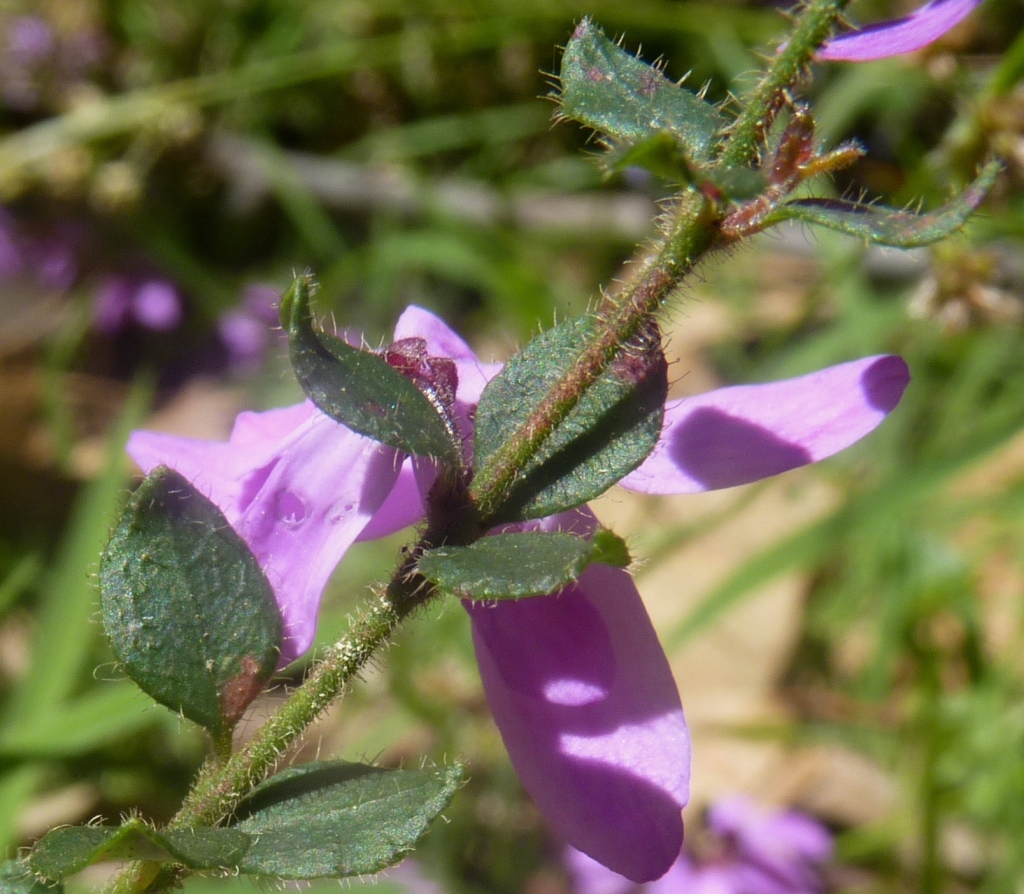Tetratheca ciliata
Lindl. Pink-bellsSlender shrub to c. 1 m high; stems glabrous and minutely tuberculate to densely hairy with hairs usually erect, from very short to c. 1 mm long. Leaves alternate, opposite or in regular whorls of 3–5, narrow-elliptic to orbicular, 2–20 mm long, 1–15 mm wide, acute or obtuse, margins flat to revolute, usually undulate, both surfaces glabrous or with a few fine, erect hairs particularly near margins. Inflorescences 1–3-flowered; peduncles 3–12 mm long, glandular-hairy (rarely almost absent) with shorter underlying acicular hairs. Sepals broad-ovate, 1.5–3 mm long, upper part strongly reflexed, deciduous; petals c. obovate 6–18 mm long, deep lilac-pink, rarely white, deciduous; ovary velvety, ovules 4. Fruit obovate to broad-obovate, 4–8 mm long; seeds more or less obovoid, 2–3 mm long, hairy, appendage cream. Flowers Aug.–Dec.
LoM, Wim, GleP, VVP, VRiv, GipP, OtP, WaP, Gold, CVU, GGr, DunT, NIS, EGL, EGU, WPro, HSF, HNF, OtR, Strz, MonT, HFE, VAlp. Also ?WA, SA, NSW, Tas. Widespread across higher rainfall parts of Victoria and often locally common in a variety of habitats.
Jeanes, J.A. (1999). Tremandraceae. In: Walsh, N.G.; Entwisle, T.J., Flora of Victoria Vol. 4, Cornaceae to Asteraceae, pp. 124–129. Inkata Press, Melbourne.
 Spinning
Spinning

